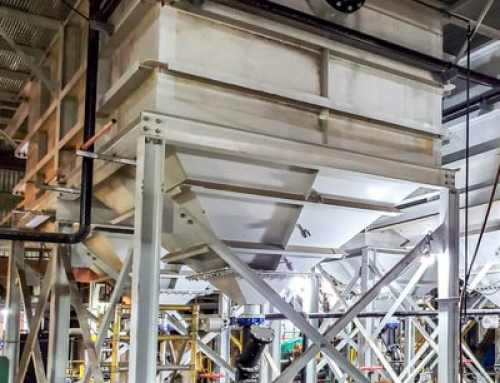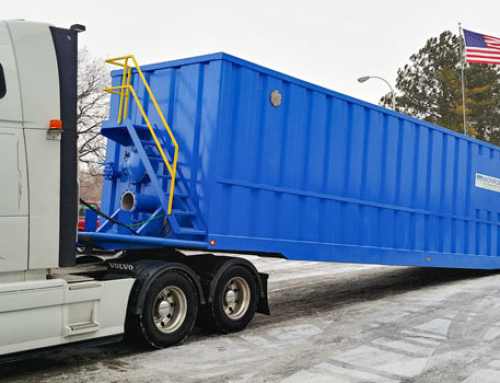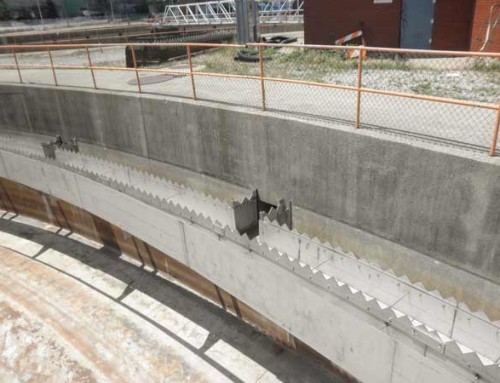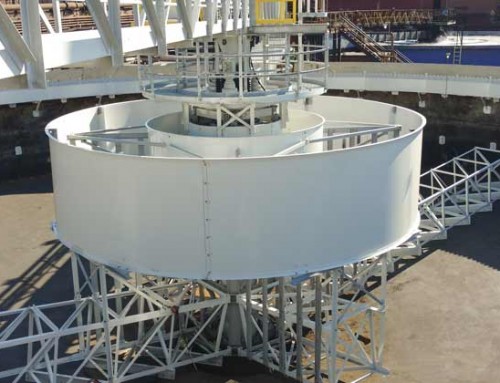
Clarifier Drive Torque: Operating Use of Torque
Normally a clarifier runs at one torque value for 90 – 98% of the time. This torque value could be termed the “running torque” of the clarifier. Sometimes the running torque is called the “design torque”. The drive unit should be designed for this running torque, which will give the most economical mechanism based on the intended use of the clarifier.
Protect from Excessive Loads to the Drive Unit
The drive unit should be protected from excessive loads that would require it to run above its design requirements. An alarm should be set that provides adequate protection, and tells the operator that there is something affecting the clarifier mechanism. This alarm setting should be above the running torque; 120% of the running torque is generally sufficient.
Use of an alarm torque value is beneficial not only in protecting the drive unit, but also in giving an added range of running torque in case the loading values were incorrectly selected. The drive unit should not be designed to run continuously at or near the alarm setting. This would defeat the reasoning behind choosing the running torque requirement.
Clarifier Drive Unit Shut-Off Protection
For the protection of the drive unit, a shut-off or cut-off torque rating should be used. If there is some abnormality in the clarifier causing a rapid increase in torque, the unit would shut itself off without adversely affecting the mechanism. Shut-off torque should be used only as a protective rating, however, and the unit should not be running continuously at this value; 140% of the running torque appears to be adequate. If the drive was sized and designed to run continuously at this value, it would be over-sized and therefore an uneconomical choice consideration.
Peak torque is the value determined by the supplier of the drive unit indicating what the unit can handle at a momentary or instantaneous load. This ultimate load should be of very short duration, e.g. in the three (3) second range, in case the torque is increased so rapidly that response time to the shut-off mode is not enough. Peak torque is normally two (2) times the running torque.
Drive Overload Device Essential
As described above, an overload device is essential for the drive unit so that the alarm and shut-off torques can be sensed and the unit protected. This is particularly important in the larger units because a good deal of money is invested in the drive and adequate protection is critical. Overload protections can be electronic and/or mechanical. On the smaller drive units, such as those that rest on the bridges of small clarifiers, the complete range of protection is not as critical. A simple shear pin device that turns the unit off when an excessive torque is sensed is generally adequate.
Specify Torque Ratings for Running, Alarm, and Shut-Off
As engineers and designers progress in their determination of the drive units to be furnished, they should remember that reputable equipment suppliers stand behind their drives. It is apparent by the operation of the clarifier if the drive is working properly. However, if project engineers state a torque value above the necessary range, they want to be assured of the results. Therefore, the specification should clearly state desired torque ratings: running, alarm, and shut-off.
As an additional requirement for a project, a torque testing procedure could be specified if required. This is a costly procedure for most projects, but if the engineer feels he or she is not getting, or will not get the drive that was specified, he or she could call for torque testing of the drive unit in the field.





